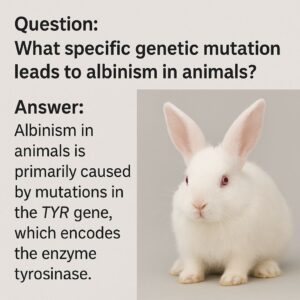 Albinism in animals is primarily caused by mutations in the TYR gene, which encodes the enzyme tyrosinase. This enzyme is essential for the production of melanin the pigment responsible for coloration in skin, fur, feathers, and eyes. When the TYR gene is mutated, tyrosinase activity is reduced or completely absent, resulting in little to no melanin synthesis. The outcome is a characteristic lack of pigmentation, giving animals white or pale skin, fur, or scales, and often pink or red eyes due to visible blood vessels.
Albinism in animals is primarily caused by mutations in the TYR gene, which encodes the enzyme tyrosinase. This enzyme is essential for the production of melanin the pigment responsible for coloration in skin, fur, feathers, and eyes. When the TYR gene is mutated, tyrosinase activity is reduced or completely absent, resulting in little to no melanin synthesis. The outcome is a characteristic lack of pigmentation, giving animals white or pale skin, fur, or scales, and often pink or red eyes due to visible blood vessels.
There are other genes involved in pigmentation, such as OCA2, SLC45A2, and MC1R, which can also contribute to different forms of albinism or pigment dilution. However, TYR-related mutations are the most common cause of oculocutaneous albinism (OCA) across many species.
Albinism is typically inherited in an autosomal recessive pattern, meaning both parents must carry the mutated gene for offspring to express the trait. While visually striking, albinism can pose survival challenges in the wild, including increased sensitivity to sunlight and reduced camouflage. Despite this, albino animals continue to fascinate researchers and observers alike for their rare and ethereal appearance.
Abinisme bij dieren NL